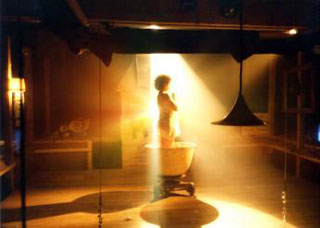-

-
Courses
Find courses by:
Collections
Cross-Disciplinary Topic Lists
- About
- Donate
- Featured Sites
This is an archived course. A more recent version may be available at ocw.mit.edu.

A scene of a multimedia theatre performance from Akko Theatre, Israel. (Image courtesy of stock.xchng and Norbert Machinek.)
Diana Henderson
21L.703
Spring 2004
Undergraduate
What is the interplay between an event and its "frames"? What is special and distinctive about stage events? How and why do contemporary dramatists turn back in time for their settings, models, and materials? How do they play with this material to create performance pieces of importance and delight for modern audiences? How do they create distinct, fresh perspectives using the stage in an era of mass and multi-media? What is the implied audience for these plays, and how does that clash or coincide with actual audience expectations and responses? What information do we "need to know," and what do we need to know that is not information? If words circulate, can meaning be stable? What is the relationship between pleasure and responsibility? What are the politics of stagecraft in our time? Is the theater really dead? What '60s pop song includes the previous question?
Focusing on two of Britain's most respected and prolific contemporary dramatists, Caryl Churchill and Tom Stoppard, we will explore these and other questions involving literary history, interpretation, and performance. As well as carefully reading and discussing selected plays, the class will create (collectively) an archive of material to enrich our understanding of the texts and their contexts-a sort of "Notes Toward a Supreme OCW Site." (The last phrase is an example of citation à la Stoppard; it may be just frivolous-or maybe not.)
Diana Henderson. 21L.703 Studies in Drama: Stoppard and Churchill, Spring 2004. (Massachusetts Institute of Technology: MIT OpenCourseWare), https://ocw.mit.edu (Accessed). License: Creative Commons BY-NC-SA
For more information about using these materials and the Creative Commons license, see our Terms of Use.
